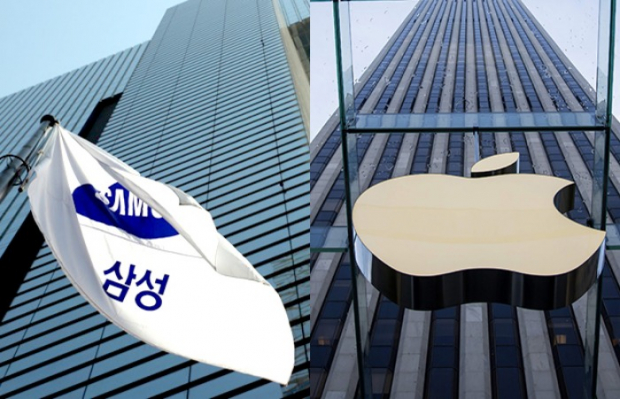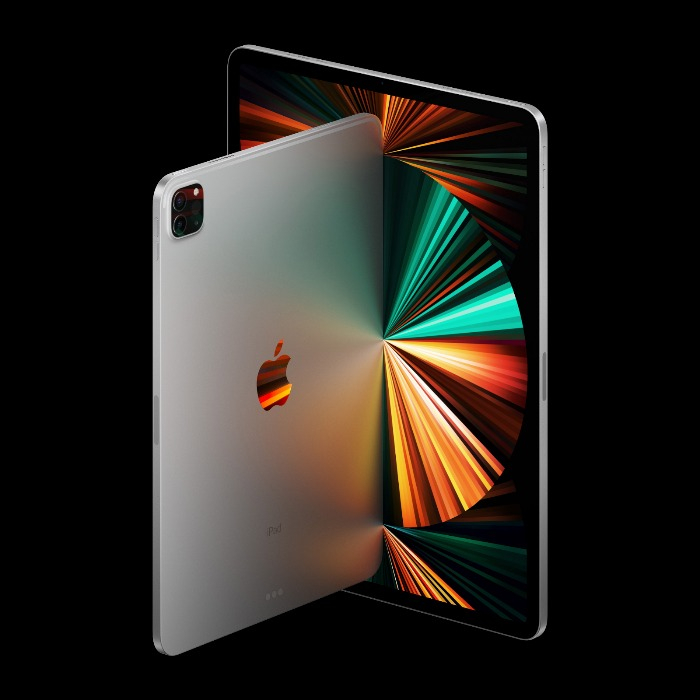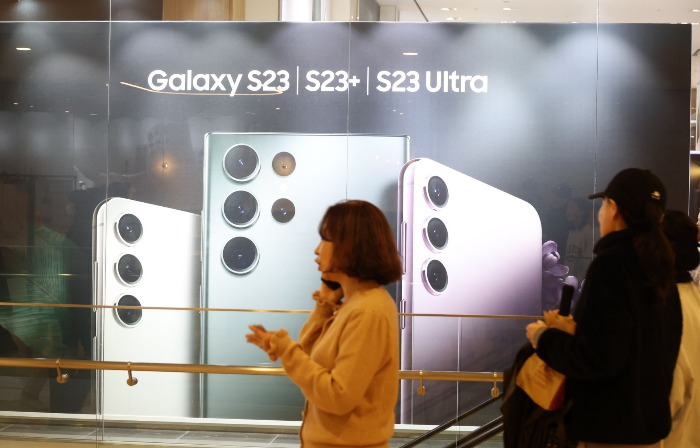Apple, Samsung in distinct cash management styles
Apple actively manages surplus money, while Samsung prioritizes holding ready funds for facility investment
By May 15, 2023 (Gmt+09:00)
LG Chem to sell water filter business to Glenwood PE for $692 million


Kyobo Life poised to buy Japan’s SBI Group-owned savings bank


KT&G eyes overseas M&A after rejecting activist fund's offer


StockX in merger talks with Naver’s online reseller Kream


Mirae Asset to be named Korea Post’s core real estate fund operator



The world’s two leading smartphone makers Apple Inc. and Samsung Electronics Co. employ different management strategies for their surplus money.
Samsung barely manages its cash reserves, depositing most of them into bank accounts and cash equivalents such as money market funds with maturities of less than one year.
By contrast, Apple invests a substantial amount of its spare money in an array of financial products, which makes it look more like an asset manager than a manufacturing company, said industry observers.
Their contrasting financial management styles are attributable to different business structures.
Samsung spends several tens of billion dollars in facility investment every year because it handles R&D, product design and manufacturing within the company for the most part.
Thus, it must keep the equivalent amount of money on hand.
But Apple subcontracts almost all its product manufacturing to outside companies, which gives it plenty of room to put surplus money into high-yielding assets such as mid-to long-term corporate bonds.

According to Apple’s quarterly report released on May 15, the iPhone maker held $166.33 billion in financial assets as of end-March. Of the sum, cash and cash equivalents account for one-third at $55.87 billion.
The remaining $110.46 billion was deployed to funds with maturities of more than one year.
Its financial assets break down into corporate bonds of $65.02 billion; mortgage-backed securities of $20.23 billion; US treasuries of $18.49 billion; foreign government debts of $6.22 billion; and US municipal bonds of $513 million.
US BONDS
Apple has increased its appetite for US treasuries. In the first quarter of this year, it bought $11.2 billion worth of US government debts, about half its net profit of $24.2 billion in the same period.
The first-quarter treasuries purchase is about twice its facility investment of $6.7 billion for the quarter.
Apple focuses on technology development and designs of iPhones and other flagship products. It assigns the manufacturing of almost all its products to subcontractors under original equipment manufacturing contracts.
Taiwan’s Foxconn and Taiwan Semiconductor Manufacturing Co. are key suppliers of iPhone and system-on-chips.

For its archrival Samsung, cash and cash equivalent made up almost all its 115.2 trillion won ($86 billion) in financial assets as of end-2022.
The remaining 12.8 trillion won was placed into financial products and stock markets.
Its shareholdings include a 1.5% stake in the Netherlands-based ASML Holding N.V., with a book value of 4.3 trillion won; a 9.5% stake in Corning Inc. a US specialty glass and ceramics maker, worth 3.2 trillion won; and a 0.1% stake in China’s automotive and electronics company BYD Co., worth 111 billion won.
Given those shares were bought as part of strategic alliances, Samsung is unlikely to offload them anytime soon.
This year, Samsung earmarked about 50 trillion won for the construction and upgrade of its semiconductor facilities. Of the total, its first-quarter R&D spending was 17.3 trillion won, its largest investment for a single quarter.
The ups and downs in the semiconductor industry prod the world’s No. 1 memory chipmaker to keep cash on hand to draw on whenever it needs.
Moreover, South Korea’s high inheritance tax rate and potential management threats from activist funds might increase the need for Samsung to sit on cash piles.
Back in 2015, Elliott Management tried to block the merger between Samsung C&T Co. and Cheil Industries Inc., a textile company of the Samsung Group, to no avail.
On the economic front, Samsung’s 50 billion won spending on domestic semiconductor facilities this year is expected to create several hundreds of thousands of jobs.
Write to Ik-Hwan Kim at lovepen@hankyung.com
Yeonhee Kim edited this article.
-
 Artificial intelligenceSamsung, Naver to jointly develop generative AI to rival ChatGPT
Artificial intelligenceSamsung, Naver to jointly develop generative AI to rival ChatGPTMay 14, 2023 (Gmt+09:00)
4 Min read -
 Business & PoliticsSamsung’s Jay Y. Lee, Tesla’s Elon Musk discuss tech alliance
Business & PoliticsSamsung’s Jay Y. Lee, Tesla’s Elon Musk discuss tech allianceMay 14, 2023 (Gmt+09:00)
2 Min read -
 Korean chipmakersSamsung to invest $221 mn to build R&D chip line in Japan: Nikkei
Korean chipmakersSamsung to invest $221 mn to build R&D chip line in Japan: NikkeiMay 15, 2023 (Gmt+09:00)
3 Min read -
 Samsung GroupSamsung's Lee to redefine growth roadmap with focus on new drivers
Samsung GroupSamsung's Lee to redefine growth roadmap with focus on new driversMay 12, 2023 (Gmt+09:00)
3 Min read -
 Korean chipmakersSamsung to fill the void as TSMC trims spending?
Korean chipmakersSamsung to fill the void as TSMC trims spending?May 10, 2023 (Gmt+09:00)
3 Min read -
 Korean chipmakersSamsung Electronics to overtake TSMC within 5 years: chip president
Korean chipmakersSamsung Electronics to overtake TSMC within 5 years: chip presidentMay 04, 2023 (Gmt+09:00)
3 Min read


